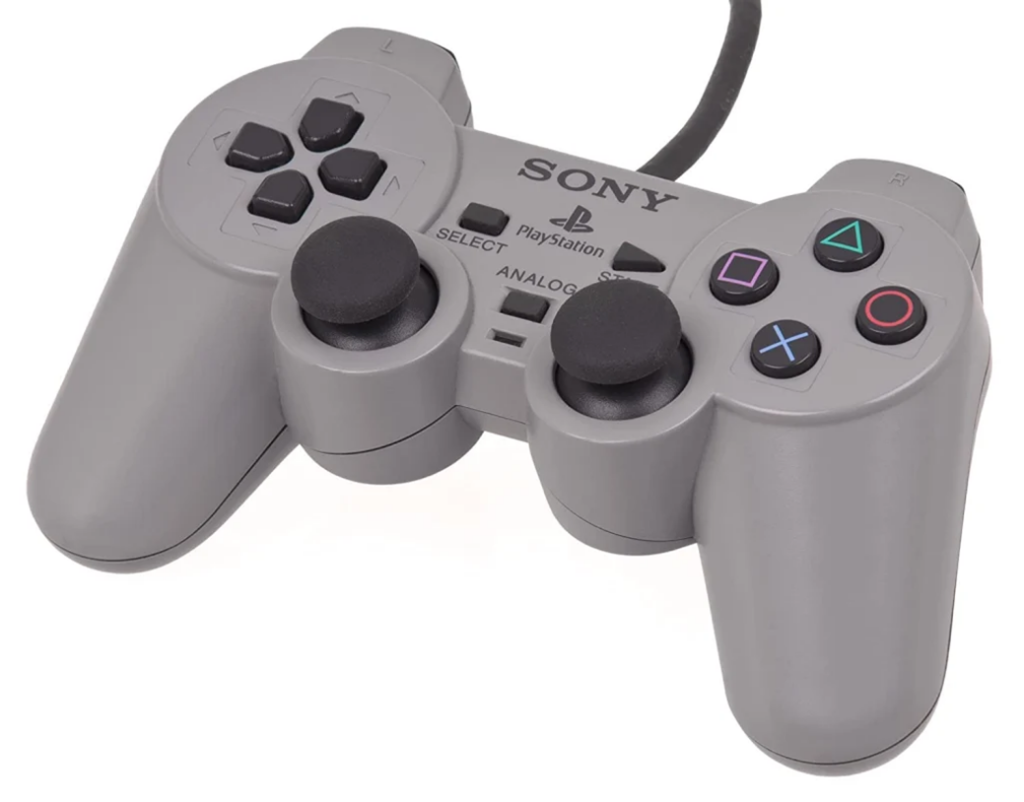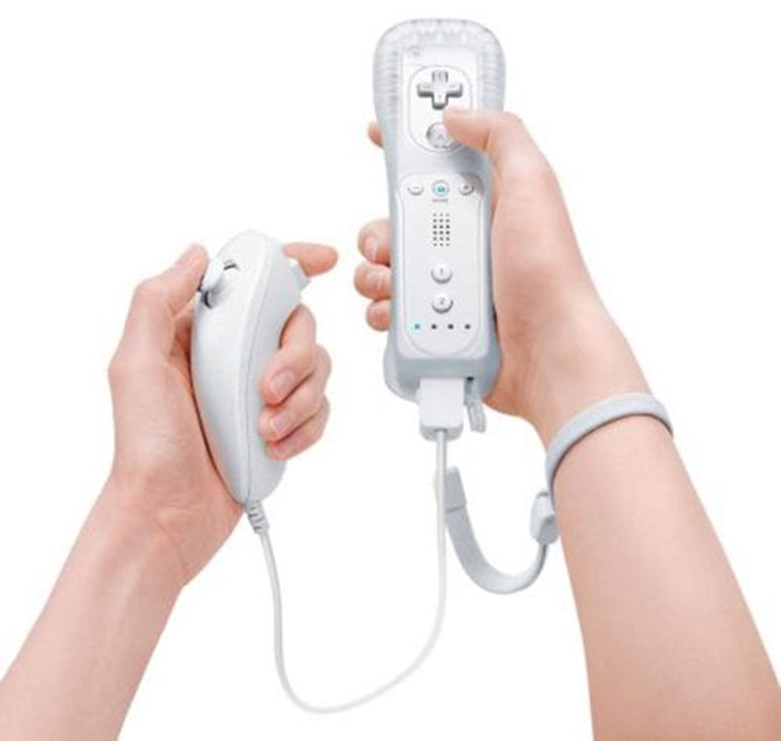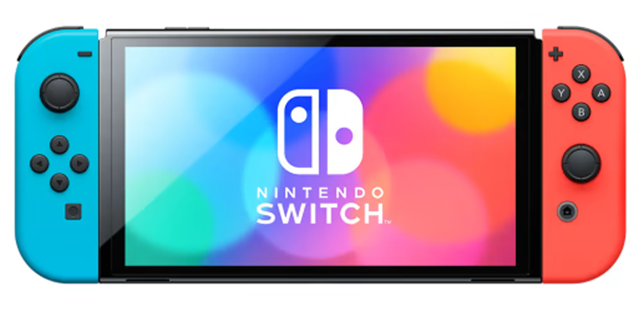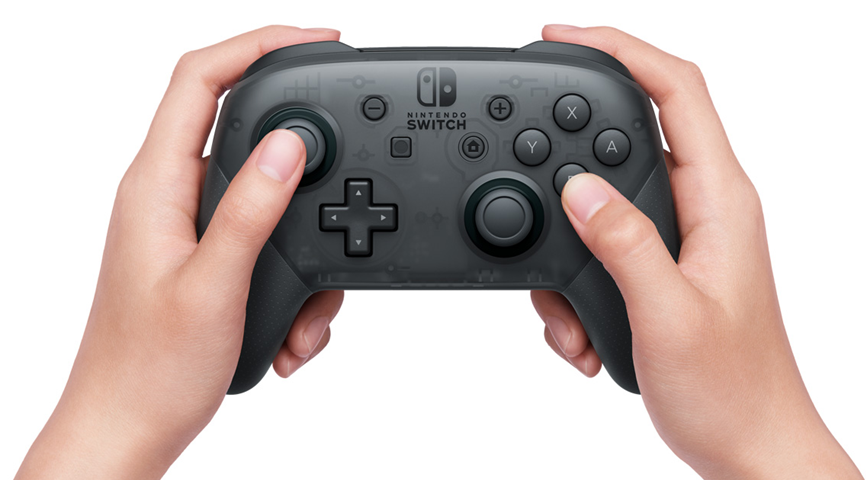Game controllers advance to meet the needs of advanced consoles and players.
By Joshua Volckaert

In Part 1 of this article, we discussed the Magnavox Odyssey and watched as Atari, Sega, and Nintendo rose to make their marks on the gaming industry. In Part 2, we will see a new generation of consoles take shape, ushering in a golden age of gaming, and their controllers will be used for far more than hopping over platforms or shooting aliens in space.
In the ’90s, the war of the machines was heating up, especially between Sega and Nintendo. Then a new player entered the ring. Having been scorned by the failings of a business deal with Nintendo, Sony decided to pick up the pieces of the canceled SNES/Famicon hybrid and create their own console. In 1994, Sony introduced the world to the PlayStation.

The PlayStation controller borrows the horizontal configuration of the NES and the button layout of the SNES, but two big differences set this gamepad apart from the others: its size and handles. Sony gave the PlayStation controller a thicker frame to accommodate the round handles on either side of the gamepad. According to Sony’s CEO at the time, Ken Kutaragi, they spent just as much time working out the design of the controller as they did with the console it came with. That work paid off, as the handles allowed for more comfort while holding the controller. The game buttons would become PlayStation’s signature look for all their gamepads, with the triangle and X buttons originally meaning “yes” and “no,” respectively, according to the PlayStation controller’s designer, Teiyo Goto. This was another giant leap in gamepad history, as most future gamepads would utilize similar designs.
With the success of Sony’s PlayStation, Nintendo sought to be innovators once again. The results of that endeavor were controversial at best.
The next generations arrive

The Nintendo 64 (N64) controller took the world by surprise in 1996. Following the design of Sony’s PlayStation, this gamepad also featured the comfort of the thick, palm-hugging handles. But what could be better than two handles? Three! Or so, in all probability, the designers of this gamepad thought. But what purpose could this mysterious third handle serve? Looking at the gamepad, it had the essentials: a D-pad, two game buttons, a start button, and a pair of shoulder bumpers. But with first-person shooters stepping onto the scene, Nintendo needed to find a way to make their console work with the games’ mechanics. That is where the joystick makes its triumphant return. To play first-person shooters like GoldenEye 007 or Doom, players would use the joystick in tandem with the Z button under the middle handle and the four new C buttons on the left-hand side. The joystick controlled movement, the Z button fired the weapons, and the C buttons adjusted aiming. In addition to all of this, the N64 came with slots on the back of the controller. One slot allowed for an add-on “rumble pack,” which vibrated the controller in the player’s hands, adding a hint of immersion so the player could feel the impact of whatever was happening on screen. The other slot accommodated a memory pack, so players could save their progress with ease. The awkward proportions of the N64 controller made many question whether shooters had any place in the console world—most first-person shooters found comfortable homes on personal computers, as the mouse and keyboard offered easier control. But within the depths of Microsoft, a new console was being constructed that would shake the foundations of gaming.
Before the spotlight can shine on Microsoft, however, it must be noted that Sony was the first to solidify the definitive design for all gamepads to come. Still riding the success of the PlayStation, Sony would shock the world with the PlayStation DualShock.

Introduced in 1997, the DualShock shaped the future. It has been the standard for Sony’s controllers going forward. Maintaining the same proportions as the original PlayStation controller, what brought this design together was the inclusion of two analog sticks centered between the handles, as well as the built-in rumble feature. It should be noted that there was a middleman between this and the original, the PS1 Dual Analog controller, which was the first to feature these analog sticks. But that gamepad faded from time, as the DualShock surpassed it, thanks to its rumble mechanics. Players could feel games like Resident Evil, Crash Bandicoot, and Spider-Man rumble to life in their hands, adding more to the gaming experience than anyone could have anticipated.
A true evolution
Microsoft wanted to make an impact with their console. To say that their goal was to redefine what a gaming console could be, would be an understatement. In order to get that message across, Bill Gates and Dwayne “the Rock” Johnson unveiled the Xbox at CES in January 2001, prior to its release later in the year. The reveal of Microsoft’s new console was big news; so was its controller.

Named after the late project manager Brett Schnepf’s son, “the Duke” drew more eyes than the Xbox itself, and it is not hard to understand why. It has gone down in history as the largest gamepad ever. According to Gates, “The design was driven by spending time with gamers and actually putting the control in their hands. [They] tried out over a hundred different form factors… to find what was the most comfortable and gave them the best gameplay.” Besides its size, what made this controller different from the rest? The Duke was built with first-person shooters in mind, so the shoulder bumpers were replaced with triggers. But what really set this gamepad apart was its placement of the dual analog sticks, with the left one placed above the D-pad. The Nintendo’s GameCube controller used a similar design but it would be Microsoft’s implementation that would change the game. The Xbox debuted with Halo: Combat Evolved, a first-person shooter developed by Bungie that was crafted specifically to work with this controller. What no one anticipated was the innovation of utilizing both analog sticks to move and aim at the same time. This may seem obvious now, but back then, when most first-person shooters either played on a PC or the N64, it changed the way people viewed games on consoles. And the fact that Halo: Combat Evolved was a huge success as an Xbox exclusive only gave players more reason to be hopeful for the future of first-person shooters. The fluid controls combined with the innovative controller ensured that Microsoft had a strong foothold in the gaming industry. And if that wasn’t enough, the controller came with rumble technology. Eventually, the Duke would be retired in favor of the slimmer Xbox Controller S, but no one can deny that this gamepad left a permanent footprint in gaming history.
Throughout the 2000s, Sony and Microsoft would be neck and neck in the video game race, releasing new consoles and refining the designs of their controllers. The PlayStation 2 came with the DualShock 2, the Xbox 360 came with the 360 controller, the PS3 with the DualShock 3, the Xbox One with the One controller, and so on. During all this, Nintendo had been doing their best to keep up with the times as well with their 2001 console, the GameCube.

Released two months before the Xbox, Nintendo’s GameCube was a humble entry for a company that used to rule gaming. The competition was simply too great at the time, and the GameCube failed to draw as much attention as the PlayStation or Xbox did. The controller may have been the first to feature the analog stick over the D-pad design, but without any outstanding games to take advantage of its innovation the controller did not get much time spotlight. It had all the makings of a great gamepad, with everything that one would want in a Nintendo controller, and many players did enjoy its sleek, curvy shape. But if Nintendo wanted to get back in the game, they needed to do something that no one would expect from them, something that would change the world, just like the competition did.
A design in motion

The Wii was Nintendo’s golden parachute. In the shadows of the giants that were the PlayStation 3 and the Xbox 360, the Wii proved that it could stand just as tall. Nintendo brought motion control to the masses and the Wii was marketed as “fun for the whole family,” which it delivered in spades. Nintendo took a page out of Microsoft’s book, allowing up to four players to join in on the fun. The Wii remote was as inspired as it was innovative, with its signature game Wii Sports being exactly what the console needed to show off the fluid motion controls. The remote itself was designed with TV remotes in mind, while infusing classic Nintendo buttons, such as the D-pad at the head, the A and B buttons (though B had been assigned to the back of the remote and remade into a trigger), and even a callback to the N64’s middle handle in the form of the Nunchuck, which featured a similar-shaped joystick and two shoulder bumpers (C and Z). This Nunchuck would plug into the other end of the Wii remote to accommodate games that required more control. X and Y would be replaced by 1 and 2 on the main remote, stacked below a speaker that played the game’s audio. And to make sure that no one destroyed their TV while going for those spares or hole in ones, the remote came equipped with an adjustable wrist strap.
Thanks to the wireless motion control, players could position themselves however they wanted, whether it be standing up to hit a home run, ducking, and weaving to avoid a knockout, or just lying on the couch while creating a Mii avatar. Wii would bring other games to life, like Mario Party 8 and a plethora of Lego games. Nintendo managed to put themselves back on the map with the Wii, with controls that were gamer tested and (for the most part) mother-approved.
Nintendo would continue to push the boundaries of what could be considered a gaming console as they entered the 2010s. They would experiment with the Wii U in 2012, which did not perform as well as anyone had hoped it would. But in 2017, Nintendo would make another comeback in the form of the Nintendo Switch.

The Switch brought Nintendo back to its handheld roots but also pulled together the elements of what brought Nintendo back to life. The two Joy-Cons on the side can be detached from the console’s screen, enabling multiplayer functionality. Their design harkens back to the days of the NES, with the movement confined to the left and the play buttons on the right. Moreover, the console also brings back the motion control of the Wii inside each Joy-Con. Touch-screen technology allows for easy access through the menus, and the entire system can be plugged into a TV. But even though they could have stopped there, Nintendo released the Switch Pro Controller, a modern gamepad designed for the Nintendo Switch.

This is the culmination of all that Nintendo has built over the span of its lifetime as a gaming company, a harmonious blend of the past and present working together. It is smooth, it is curved, it has all the necessary buttons and analog sticks, it fits comfortably in most players’ hands. It is the gamepad Nintendo was always meant to make. But in an ironic twist of fate, the unique flare that brought Nintendo back has been lost, as it adopts the same silhouette that all gamepads have in this era of modern gaming.
The latest designs
Sony has recently released the latest installment in the PlayStation lineage, the PlayStation 5. And with a new PlayStation comes new exclusive games, and a new controller, but is it as new as it claims to be, or is it more of the same?

One word that comes to mind when looking at the PS5’s DualSense controller would be “satisfying.” It boasts a sleek, compact design with none of the bulbous curves of the DualShocks that came before it. The white panels that surround the black center are complemented by blue LEDs that will glow as the console brings the controller to life. On a mechanical level, it has all the pieces that make up a PlayStation controller. The symmetry of the analog sticks remains intact, along with the D-pad on the left and classic triangle, X, square, and circle play buttons on the right, and double shoulder bumpers on the back. It is as refined a controller as it could possibly get. But take a look under the hood and there are a couple of secrets it is dying to share. The DualSense controller now boasts some new immersive features, such as haptic feedback. This is a new iteration of the original rumble mechanic, causing the controller to generate different vibrations depending on what is happening in-game. According to Rick Henderson, senior news editor of Pocket-lint, “Driving over ice feels different in Dirt 5 than driving over gravel.”
Another immersive feature the DualSense provides is adaptive triggers. The triggers of the gamepad will actively resist your pulls in accordance with the in-game event, so you feel the pressure of a bowstring pulled taut or the give of a pedal as you accelerate. By this stage in the game, how much further can Sony push the boundaries of immersing the player in an artificial world? With technology getting more advanced and faster than anticipated, it seems those boundaries are about to be broken once again with the PlayStation VR2 once it is fully developed.
Microsoft is keeping pace with its two rivals in the form of the Xbox Series X. Though the consoles sport different games, by now they all share very similar controller designs. How does the Xbox Series X controller compare to its peers?

At the moment, Microsoft doesn’t seem to feel the need to innovate much beyond what they have already achieved. The Xbox Series X controller is a simpler, sleeker, more refined version of the controller that came before it, which was a more refined version of the one before that, and so on. By this time Microsoft’s designers have clearly adopted this If it ain’t broke, don’t fix it philosophy and there is not much to fix with this controller as a whole. The bulkiness of the Duke has been gone for over two decades, and that was essentially the only complaint anyone ever had with the Xbox controller. There are new textured grips applied to the triggers and handles, and a new share button, which allows players to capture their favorite gaming moments with ease, but other than that, it is the latest update to Xbox’s otherwise solid line of controllers. Efficiency at its finest.
Designed for more than gaming in mind
One key aspect about the evolution of the gamepad is how it was designed with handheld tools in mind. The gamepad is a tool. Just like any wrench or hammer or screwdriver, the handles are made to fit comfortably in the palm of a user’s hand for maximum work efficiency. And the gamepad has found itself in more places than in the hands of the casual gamer. Xbox controllers have proven themselves invaluable when it comes to uses in the medical field. Doctors utilize the intuitive controls of the gamepad to navigate through a digital model of a patient, to prepare for surgery. Nintendo Enthusiast’s Chirag Pattni reports that Wii remotes have been utilized in cognitive psychology experiments as well as physical therapy. But the application for these innovative tools does not stop there. Just like the original use for the Magnavox Odyssey, gaming controllers have made their way back into the military. Bomb disposal robot consoles have been tossed aside in favor of the more intuitive PlayStation controller. NASA is utilizing the Oculus Rift and Xbox One Kinect to operate a robot arm in VR. At some point, it would not be surprising to see vehicles being driven with a Nintendo Switch Joy-Con.
The history of the game controller is far older than many gamers today. Most of them will never be able to conceive the idea of using knobs to control a pixelated paddle, bouncing a digital ball from one side of the screen to the other. None of them will know what it is like to watch as generations of controllers evolve from bar-shaped blocks to devices larger than a newborn’s head. Before, video games were seen as something meant for children to kill time. But it is, and always has been, much more than that. It is a business, a lifestyle, a cultural phenomenon. Without the gaming industry, the world would be a vastly different place than it is today. There would be no digital simulations for surgeons to practice on, or any effort to harness VR-operated robot arms, or safer ways to dispose of bombs in a war zone, because the controllers would not be in the hands of those who need them. Video games have not only changed the world, but they have also changed with the world, with controllers alongside them.
What do we think?
There is so much history pertaining to video games that I had been unaware of. Before doing the research for this article, I had no idea about the Magnavox Odyssey, or how pivotal Nintendo was in the gaming industry, or how each and every new gamepad influenced the design of the next. Honestly, this entire topic just got more intriguing, the deeper I dug into information about this hobby of mine, which has become more of a passion than anything. I may be more comfortable with a keyboard and mouse, but after all I have learned while writing this paper, I now have a newfound appreciation for video game controllers. They are so much more than buttons and analogue sticks. Their controls unlock entire worlds beyond the screen of imagination.





